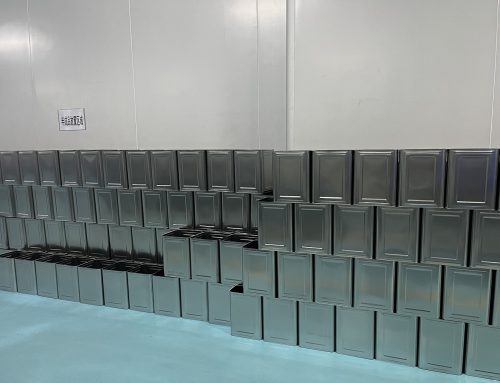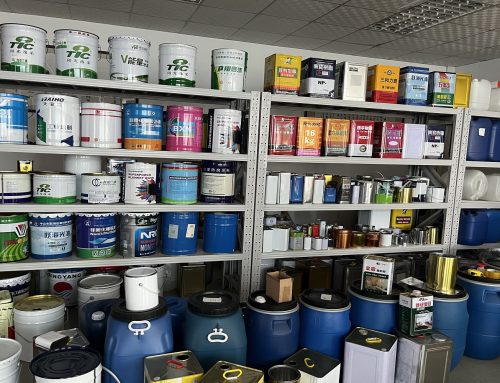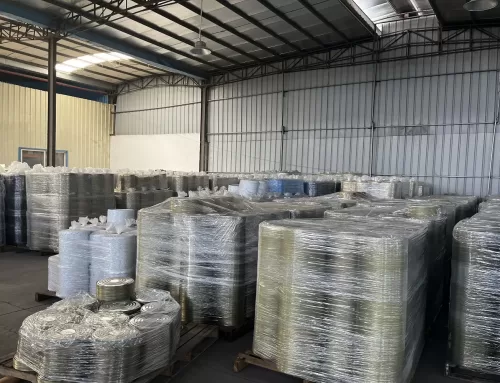Metallic materials are one of the oldest materials discovered and used by mankind, and still occupy a dominant position in the materials industry in my country and some developing countries. Metal material is one of the four commonly used packaging materials. With the development of modern metal container forming technology and metal coating technology, it plays a pivotal role in the packaging material industry. The following introduces the characteristics and performance of thin steel sheets commonly used in the production and processing of food packaging containers.
At present, the steel used for packaging is mainly thin steel plate, which can be divided into hot-rolled steel plate and cold-rolled steel plate according to the rolling method. The steel plates used for packaging are mostly thin steel plates made by hot rolling of ordinary carbon steel and ordinary low-alloy steel. In order to enhance its corrosion resistance, it is usually necessary to coat the surface. According to the different coating metals, it can be divided into three types: tin-plated steel sheet, chrome-plated steel sheet, and galvanized steel sheet.
Tinned steel sheet
Tinplate, commonly known as tinplate, is a low-quality thin steel plate with tinned surface. Tinned by hot-dip process is called hot-dip tinplate; tinned by electroplating process is called electroplated tinplate. The corrosion resistance of the steel plate after tin plating is enhanced, and the ductility and workability are further improved. This is because the steel plate is tin-plated, and a dense layer of tin-iron alloy is formed between the inner layer of steel and the outer layer of tin. This thin layer of alloy has good corrosion resistance. The pre-nickel-plated steel sheet developed in Japan not only improves the weldability of the original plate, but also improves the corrosion resistance and paint adhesion of the original plate. In addition, there is a two-layer chromium-plated steel plate made by first plating a layer of metallic chromium (100mg/m2) on the original board, and then plating a layer of tin (0.1~0.3g/m2). This kind of steel plate has good weldability and corrosion resistance, reduces the cost of painting, and can be baked at high temperature for a short time. The tinplate tinning process for packaging uses insoluble anodizing. The process is simple, efficient, and the coating is uniform and firm. It can realize positive and negative plating with different thicknesses, effectively avoiding the need for acid pickling in hot dip plating. The discharge of chromium toxic waste water can save waste water treatment costs and reduce environmental pollution.
In packaging applications, tin-plated steel sheets often have to be coated on the inside of the container that is in contact with the article, and then packaged with food and other contents after being dried. The coating is dense and uniform, has good adhesion to the surface of the tin-plated sheet, and is not easy to fall off and damage during processing. The raw materials of this coating are mostly epoxy resin, phenolic resin, etc., which do not pollute food, are harmless to human body, and have good corrosion resistance. It can prevent the deterioration of oil and medium in food, thereby effectively protecting the quality of food . The welding of tinplate cans adopts high-frequency resistance welding technology, which can not only reduce pollution, but also improve welding quality.
The larger characteristics of tinplate are anti-corrosion, easy processing, punching molding, welding processing, easy installation and printing, and non-toxic and harmless, so it is suitable for packaging all kinds of food, beverages, and medicines. At present, it is mainly Used as packaging material for canned food.
In recent years, the French steel company first developed a new type of tinplate for packaging and put it on the market, causing a revolution in the packaging industry. According to the different requirements of the packaging industry, the thickness of tinplate material, the amount of tin plating, and the mechanical properties have different needs. At present, the thickness of the materials used to make three-piece cans in Europe is 0.13mm~0.21mm, which not only saves steel and reduces costs, but also does not reduce the requirements of all aspects of the product. From the statistics of European countries, because of reducing the thickness of the material, the company can obtain a 20% income, which is much higher than the income obtained by reducing the price of the tank by 3% to 4%. At present, the production of tinplate in France accounts for 40% of the European market, and it is growing at a rate of 8%. The main reason is the development of special materials for different purposes. In Europe, some can-making companies have begun to produce tinplate two-piece cans, but the equipment has not changed much, and the production equipment of aluminum two-piece cans is still used. Substituting steel for aluminum cans can reduce costs by 15% to 18% and increase the mechanical strength of cans by more than 60%.
At present, the general trend of the development of tinplate for packaging is to reduce the thickness of the material and improve the mechanical properties of the material. The main types of tinplate products for packaging are tinplate for three-piece cans, tinplate for spray cans and cosmetic cans, tinplate for closure and crown caps, tinplate for paint and chemical product containers, tinplate for two-piece cans, tinplate for special-purpose packaging, etc.
1. Tinplate for beverage cans. This kind of tinplate for beverage cans is characterized by higher purity, no impurities, and more corrosion resistance; the drawing width can reach 1200mm; the shape is very round and the size error is small; the continuous annealing has good toughness. It can greatly reduce the thickness of the tinplate on the basis of ensuring the good performance of the tinplate, so that the tinplate has superior mechanical properties and plasticity.
2. Martite can be used for food cans. At present, the series of tinplate produced in Europe can be used to produce many different types and shapes of food cans. These tinplates mainly include continuously coated tinplate (for the bottom of DRD-coated cans), tinplate for easy-opening lids, and tinplate for stretched cans. Among them, the tinplate used to produce ultra-thin cans and crown caps makes the opening of the bottle very safe and reliable.
3. Tinplate for spray cans and cosmetic cans. Tinplate for packaging is suitable for manufacturing high-pressure spray cans, so that such containers comply with international standards and are not harmful to the environment.
4. Tinplate for paint and chemical product containers. Because tinplate for packaging has excellent impact resistance and flame retardancy, using these packaging containers to package coatings and paints not only meets the relevant regulations on the transportation and storage of toxic substances, but also allows manufacturers to save a lot of insurance costs.
5. Tinplate for special purpose packaging. Tinplate for special purpose packaging has good printability and is more suitable for printing on containers of various shapes.
Chrome Plated Steel
Low-carbon steel plate with chromium-plated surface is called chromium-plated steel plate, which is a newly developed substitute material for tin-plated plate to reduce the amount of tin and reduce production costs. It is also called chromium-type tin-free thin steel plate or tin-free steel plate. The chrome plate has poor corrosion resistance and must be coated with paint before it can be used. The chrome-plated plate after the coating has a strong coating film adhesion is suitable for manufacturing the bottom cover of food cans and punching and cupping cans. Compared with tinplate, Wuxi steel plate has the following advantages and disadvantages:
1. The advantages of Wuxi steel plate
(1) The amount of plating is small, so the cost is relatively low
(2) The paint has good adhesion. The surface oxide film is honeycomb and contains -OH and other genes, so it has strong adsorption and wettability to the paint.
It is 2 to 5 times the adhesion of the same kind of paint on tinplate, and there will be no missing fisheyes or craters that tend to appear on tinplate.
(3) The temperature resistance is good, and there will be no “tin disease” phenomenon of tinplate at low temperature.
(4) It has high sulfur resistance and high alkali resistance. Because chromium and chromium oxides do not react with sulfur and alkalis, they have good sulfur and alkali resistance, and will not vulcanize or blacken. At the same time, it has good corrosion resistance to the atmosphere, organic solvents, oils, etc. .
2. The disadvantages of Wuxi steel plate relative to tinplate
(1) The spot weldability of the chromium layer is poor, requiring special welding equipment or welding after removing the chromium layer. Generally, welding and bonding methods are used for can body joints. (2) When the oxide film is thick, the ductility will deteriorate. (3) Poor acid and corrosion resistance, generally need to be coated with high acid-resistant paint before it can be used in a weakly acidic environment.
The chromium plating process of the tin-free plate adopts a low-concentration two-step electroplating method, which not only reduces the consumption of chromium, but also reduces the amount of waste water treatment, which is beneficial to reduce the environmental load, and the plating layer is thin and uniform, and the cost is low. At present, the main domestic applications of chrome-plated steel plates are beer bottle caps, beverage and neutral food can coating caps, and food cans are rarely used. In foreign countries, a large number of internally coated and externally printed Wuxi plates are used as fish and meat cans, especially two-piece cans, which give full play to the advantages of Wuxi plate’s excellent resistance to sulfide blackening and strong paint adhesion.
Galvanized steel
Galvanized steel sheet, commonly known as white iron sheet, is a low-carbon thin steel sheet with galvanized surface. The galvanized layer is a protective coating that can protect the steel plate from atmospheric corrosion during use. The galvanized layer generally needs to be passivated. The passivation film formed after passivation in chromic acid or chromate solution is not easy to interact with humid air and has a strong anti-corrosion ability. But zinc is easily soluble in acid or alkali, and easily reacts with sulfide, so it is not suitable for packaging acidic, alkaline or sulfide products.




